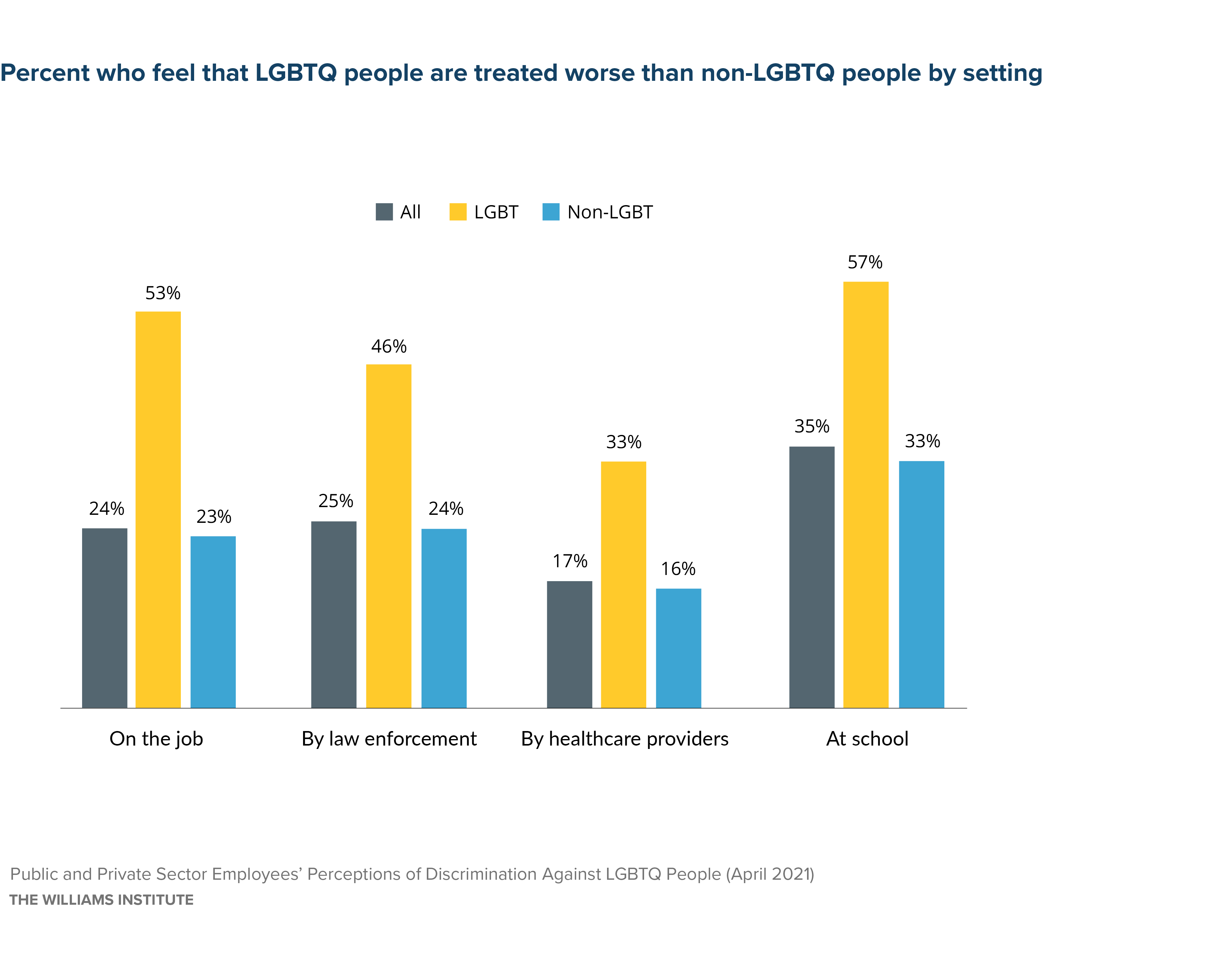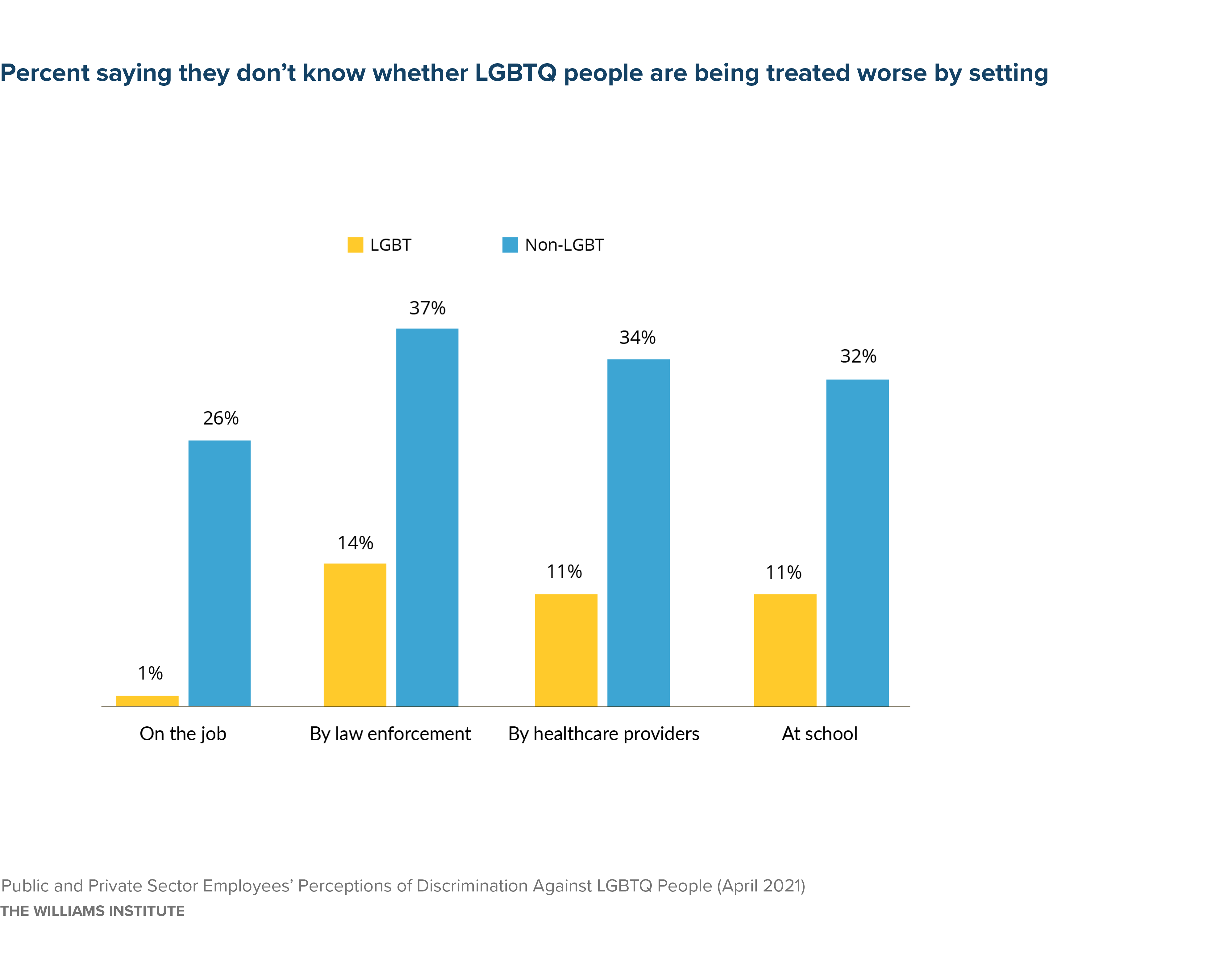Executive Summary
Several studies have measured discrimination against LGBTQ people and public perceptions of discrimination against LGBTQ people. This brief considers differences in perceptions of discrimination among public sector employees—including federal, state, and local employees—and private sector employees. Additionally, it examines differences in attitudes toward non-discrimination protections and other rights among all Americans and among employees in the public and private sectors.
We analyzed data collected from 2,237 adults in the U.S. in May and June of 2019. The data were collected by IPSOS in collaboration with Thomson Reuters and the Williams Institute. Overall, we find that the patterns of discrimination reported by state, local, and federal government employees, as well as private-sector employees, are very similar: employees in all sectors report high levels of continuing discrimination and harassment of LGBTQ employees in the workplace. In addition, they report similar rates of extensive and continuing unfair treatment of LGBTQ people in schools, by law enforcement, and by health care providers.
Significant proportions of both LGBT and non-LGBT people believe that LGBTQ people are treated worse than non-LGBTQ people at work and at school, and by law enforcement and healthcare providers. Moreover, across these domains, one-fourth to over one-third of non-LGBT people responded that they did not know whether LGBTQ people are being treated worse.
Additional key findings include:
- LGBT adults work in both private and public sectors. Across all sectors, 5.9% of employees are LGBT.
- Over 45% of all employees (both LGBT and non-LGBT) report hearing anti-LGBT remarks in the workplace across employer types.
- Employees in all sectors report that LGBTQ people are treated unfairly in the workplace nationally; almost one in four (24%) of all employees.
- However, LGBT employees (53%) are twice as likely to feel that LGBTQ people are treated worse across the nation than non-LGBT employees (23%).
- One-fourth of all Americans (25%) say that LGBTQ people are treated worse by law enforcement than non-LGBTQ people in the U.S. Almost 46% of LGBT people thought LGBTQ people are treated worse by law enforcement across the nation compared to one in four (24%) non-LGBT people.
- Seventeen percent of all Americans say that LGBTQ people are treated worse by health care providers. Almost one in three (33%) LGBT people feel similarly compared to 16% of non-LGBT people.
- Nearly nine in 10 adult students (87%) report hearing anti-LGBT remarks in school.
- Approximately one-third of all Americans (35%) think that LGBTQ people are treated worse in schools across the U.S. Almost six in 10 (57%) LGBT people believe that LGBTQ people are treated worse in schools nationally, while only 33% of non-LGBT people believe so.


